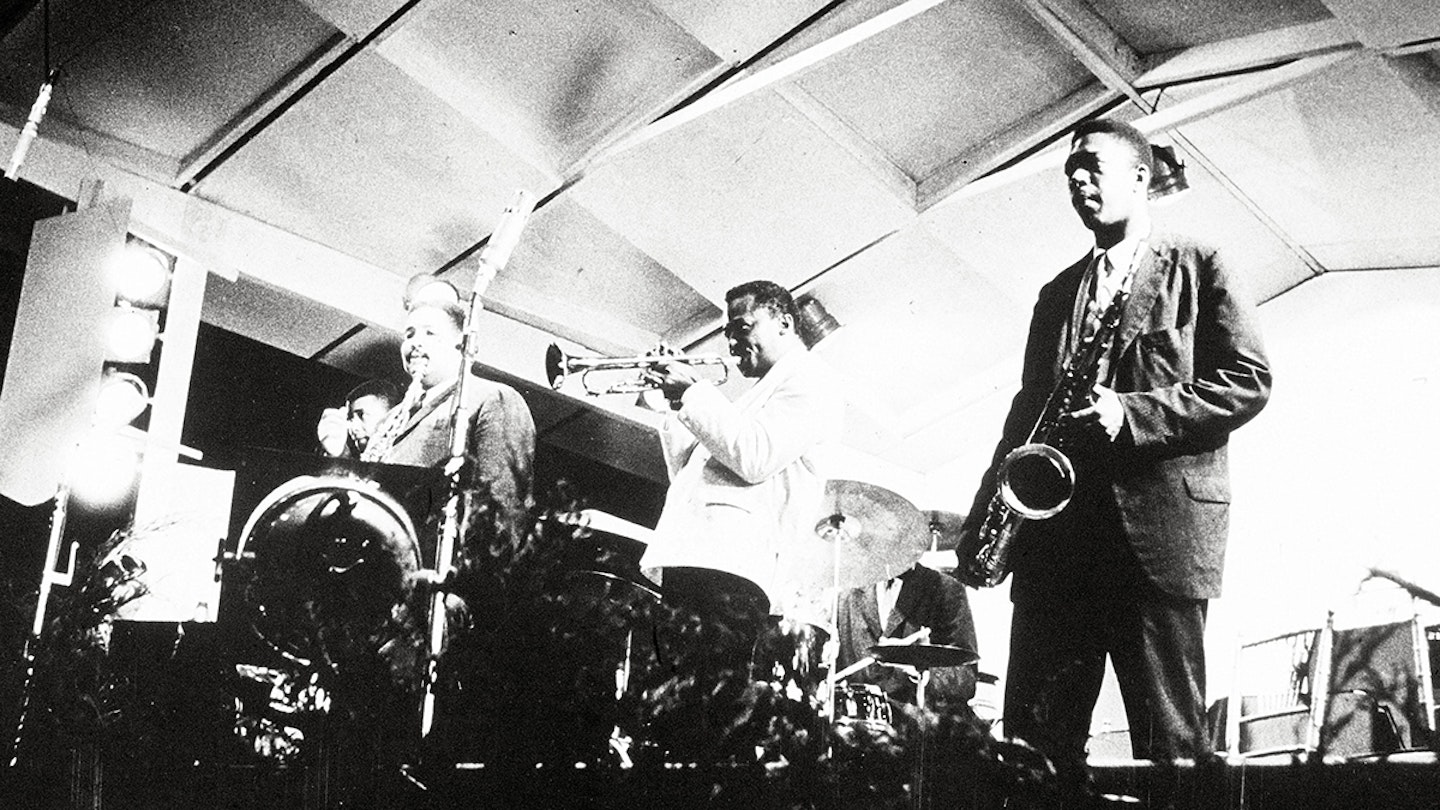3 July 1958
Chuck Berry was feeling pretty chipper. In a few days he was due to move his family into the house of his dreams on 13 Windermere Place in the north side of St Louis. In the interim, he was to play a gig at Newport, Rhode Island’s jazz festival. He chuckled as he went into his duck walk during Sweet Little Sixteen. Festival organiser George Wein grimaced, however. “When he went into his duck walk, I literally cringed,” he claimed, “but the crowd loved it.”
But then Wein’s heart ticked only to the beat of jazz. He’d founded the Newport Jazz Festival in 1954 and watched it flourish. And 1958 was set to see the festival become world famous, as photographer Bert Stern and co-director Aram Avakian descended on the Freebody Park concert site, with a camera team set on creating a film that would capture every nuance of the four-day event. The line-up was stellar. Duke Ellington’s Orchestra, Dave Brubeck and Miles Davis were set to play on the opening Thursday evening. Gerry Mulligan, Louis Armstrong, Thelonious Monk, Sonny Stitt, Sonny Rollins, Benny Goodman and George Shearing were just a few of the greats performing. But Stern wanted to dig deep, evoke the whole atmosphere of the festival.
His opening shots focused not on the musicians but on the nearby harbour, filled with yachts, some of which were participating in the America’s Cup. There were to be no roaring big band riffs employed as an introductory theme. Gradually, very gradually, Jimmy Giuffre’s gentle, contrapuntal The Train And The River would edge the film onto the screen, the music echoing the sound of the rippling sea.
Evocative images abounded, particularly in the case of singer Anita O’Day. She appeared in fashion model mode, which appealed to Stern, who had made his name in fashion photography and would later provide unforgettable images of Marilyn Monroe, Audrey Hepburn and others. O’Day had purchased a black frock and white gloves from a Greenwich Village dress shop. “Then they brought this hat which had large white feathers.
I was due on at 10-to-five and I was like this girl going to a five o’clock party,” O’Day recalled.
The image of Anita scatting her way through Sweet Georgia Brown, clad in her party best, is one
that forever remains in the memory.
Chuck Berry And Ray Charles
If Stern’s camera documented every nuance of the entertainers – like the shots of goodtime Dixieland band Eli’s Chosen Six freewheeling around the town in their vintage jalopy – then it focused just as enthusiastically on the audience, sometimes dancing, sometimes just sun-gazing in their deck chairs. But one critic disapproved of that year’s crowd. ”Many of the college kids who came to the festival and now sit in the cheap ($3) seats are more interested in the opposite sex, drink and a night on the town than the music,” he raged. Other purists complained about the Blues In The Night segment, the John Hammond-instigated portion of the festival that included not only Chuck Berry but also Ray Charles, Joe Turner and Big Maybelle.
Not one critic raised a voice to criticise the magnificent gospel singer Mahalia Jackson, however, who deep into a cold wet night, cocked one eye to the heavens above and sang Didn’t It Rain with a fervour that elevated the event into one glorious revival meeting.
“Miles was too far out for me.”
Bert Stern
But Ray Charles’s performance was never captured by Stern’s camera team. Nor were those of John Coltrane, Duke Ellington or Miles Davis. Stern claimed that the decisions about whose sets should be filmed or ignored was largely down to Aram Avakian’s brother George, who was head of jazz at Columbia Records and had signed Coltrane, Davis and Ellington to the label.
“We didn’t shoot Duke Ellington because George Avakian said it would be too difficult to clear,” recalled Stern. However, he didn’t regret not filming Miles. “Personally, I didn’t like Miles,” he revealed, “he was too far out for me.”
It would be 1960 before the film premiered. Stern felt that he wanted more scenes of audience participation. Further footage was shot at parties in Long Island, meaning some JOASD scenes feature punters who never got within a trumpet’s toot of Newport’s Freebody Park. But Stern got the results he wanted. It wasn’t all about the music. It was the atmosphere, the joy and glow of merely listening to great sounds in the sun.
Somewhere in a Harlem public library a large stash of unseen footage resides. Could Jazz On A Summer’s Day 2 be a possibility? Bert Stern never ruled it out.
